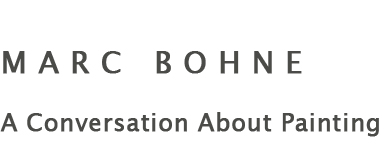A painter’s voice
A while back I posted some thoughts on the passing of Russell Chatham where I mentioned the dilemma of being compared to others while trying to develop one’s own “voice”. I was asked to expand on that and thought it might be worth doing.
It is true that we are each an amalgam of our lifetime of exposure to others influence, and all those contributions help create the language we as painters use to both observe and respond to our world. And it does not matter what ‘style’ one paints, from abstract expressionism to cubism to realism or any of the other “isms” that get thrown around in the world of pigeonholing fine art. All painting is representational, and all is an attempt by the painter to observe and respond to the inner or outer (or both) world we find ourselves in a way that gives us deeper meaning. I think that when an artist is successful, that meaning becomes shareable.
There is a long tradition in the apprentice model of learning where any artist learns things from others before them (or alongside them) who are seemingly doing a better job of it than the apprentice, and emulation is a common reaction.
It can also be a trap.
When I was in art school, Andrew Wyeth was a big deal. Many of us “realists” (as opposed to “representational” which is all encompassing) studied Andrew Wyeth’s voice in detail, and painted paintings that mimicked his work to the best of our abilities. This is an old technique in art schools everywhere, not unique to mine. But I realized at some point that I was not speaking with my voice, but with Wyeth’s, so I began to pay more attention to his (and others) PRINCIPLES rather than style. That change kicked me off onto my own path and for better or worse I have tried to keep to the trail.
There are many Wyeth “clones” out there, people who stayed with the Wyeth style, painters who felt most comfortable speaking with his voice than their own and I have met plenty of them. Mind you, I was on that path too so this is not a judgement, just an observation. Most of the ones I know are phenomenal painters who have successfully tweaked Wyeth’s voice to work for them, but I admit that I feel a little estranged from them. Kind of like meeting Elvis impersonators, some of whom are extraordinarily talented individuals, but without a voice of their own. I am often confused by what I am looking at, because I knew what Wyeth was doing, the underpinnings of his conversation with the world, which were unique to him. Those underpinnings were what gave Andrew Wyeth’s paintings so much depth. Wyeth’s paintings are not about his paint, they are about what he FELT. I don’t see the same depth in those who mimic him because his paintings were the perfect union of knowing what he wanted to say and saying it with his own unique voice.
Just to be clear here… I am in no way making any comparison of myself to the great Andy Wyeth. His influence on me is just the scaffold on which to make the point.
Part of the process of finding my own voice has been looking at others work over the years from a principle of painting or drawing standpoint, or not looking at others work at all. For many years I stopped going to galleries and museums to look at other’s work and worked in my own isolation struggling through the processes of tweaking my own painting to do what I wanted it to. It is important to note that there is a significant underpinning to my journey of study and experience that equipped me to do so. This does not mean I don’t look at other’s work, but I don’t study it. I just let it impact me as viscerally as possible. It also does not mean that I am any model of success with my own beliefs. It is a process that is never perfected.
Eventually, I think every painter has to do two things: One, have a point. Have something you need to express, something you can articulate. And two, spend the time finding your best unique voice to express that point. Every painter has to give him or herself permission to do both.
















